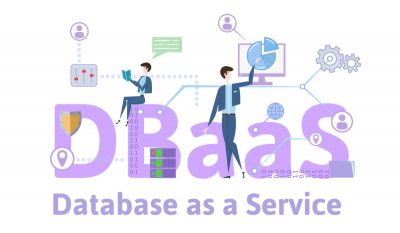A database is a center of the flow of data, just like the heart is a center of the flow of blood to a body. Data flows from the database to every part of the system, just as blood flows from the heart to every part of the body. To maintain proper blood flow in the body, it is essential to have a healthy heart, and just the same can be seen in the case of database systems.
The overall health of an entire organization depends on having the right database management skills and the dedication of following best practices for the proper maintenance and optimization of its databases.
The database administrator (DBA) of an organization is like what a brain to the body is. Thus, a knowledgeable and skill-oriented database administrator is much needed in facilitating the health, availability, and performance of a database. The brain functions to continuously perform actions, just the same way DBAs (database administrators) aim at continually optimizing database performance and handle the situation that takes place at any point in time.
Databases being the backbone of every enterprise, it is vital to have professional and competent database administrators who are committed to implementing best practices for managing database and continuing to upgrade in their daily tasks to expand and advance their skill sets (architecture, orchestration, etc.)
Best practices every organization must undertake
The following key components should be taken into consideration by every organization while talking about how to manage its enterprise databases. The best practices also help the Database Administrators (DBAs) to maximize optimization and efficiency and speed up their allocated tasks.
- Expertise or the type of database an organization may hold like Oracle, SQL Server, NoSQL, MySQL, etc.
- On-hand staff and level of resources that are available for the management of databases (e.g., in-house DBAs or external staff; consultants and/or Managed Services Providers). Employees who have the right skills not only to block and tackle databases regularly but also to handle change and have strategic experience in the cloud, AI, machine learning technology, and automation of databases during this period.
- The deployment approach and strategy (e.g., on-premises, private cloud, public cloud, hybrid cloud)
Database Management System (DBMS) – application and uses
Following uses state how DBMS is widely used in various business sectors:
1. Railways and amp; airline reservation system
The database helps to keep track of ticket booking, arrival, and departure times for mode of transport. Database updates can help passengers get timely notifications on the status of any mode of transportation.
Example: JavaFX and MySQL are used to create, read, update, and delete data in the railway reservation system. Reservation and cancelation of tickets get automatically stored in MySQL.
2. Personal cloud storage
Storing data such as photos or some other essential documents can be done on “the cloud.” Cloud acts as a container that authorizes to keep a small portion dedicated just to a single user.
Syncing up the data with respective devices requires a robust database that can call up asked details at any moment.
3. Banking
Bank transactions are done without going to the banks daily. This can be done based on the DBMS that operates all the bank transactions.
Example: SAP Adaptive Server Enterprise (formerly SAP Sybase ASE) is the relational database management system (RDBMS) of Sybase. SAP’s ASE is structured in such a manner that it can handle high-performance, transaction-based applications mainly used in banking and finance as well as supports thousands of concurrent users.
4. Universities and colleges
DBMS helps maintain students’ details like name, attendance, results, courses, and all the related information.
Example: Educational institutions use Informix from IBM for storing student’s information. The software is termed as an “intelligent database” that can easily integrate well with SQL, JSON, and spatial data.
5. Social media sites
Being social through virtual is made possible via various social media sites such as Facebook, Twitter, Pinterest, and Instagram. All the information of the users connected through these sites is stored in DBMS.
Example: Tech enterprises such as Facebook, Google, and Adobe use MySQL as their database management tool. For Facebook, MySQL acts as the primary database management system for storing all the structured data such as the different wall posts, information of the various users, their timeline, and so on. This collection of data is then sent across their other multiple data centers.
6. Weather
Weather predictions across the globe is a complicated task. It depends on various factors such as gathered, stored, and analyzed data.
A weather company takes approximately 20 terabytes of data a day. To perform the task, the company makes use of a number of databases that include MySQL, Microsoft SQL Server, Cassandra, and more.
7. E-commerce
E-commerce organizations make use of databases while selling any product. Organizing their products, pricing details, and user purchase history, etc., is what is all present in the databases.
E-commerce companies make use of databases to help their customers choose the best product using advanced platforms such as WooCommerce. This data is stored in a highly protected environment using standards set of PCI (payment card industry) Compliance.
8. Healthcare
Doctor’s clinics and hospitals retain vast volumes of patient data for ease of access. The repositories containing this set of information are massive, complicated, and store reliable, safe data. It complies with the HIPAA (Health Insurance Portability and Accountability Act) guidelines.
Healthcare organizations make use of a NoSQL database to operate health insurance information. Cassandra is one of the strongest examples of NoSQL database software.
Inference
Looking at the continuous evaluation of the DBMS industry, the DBAs need to comply with their changing positions and gain strategic insight to keep pace in this transformative period of autonomous databases to implement best practices for database management.









































































